Rob Bignell's Blog, page 318
October 25, 2014
Every word I write is a seed that I may nurture into a small, beautiful poem or a tall, soaring tree
Each idea 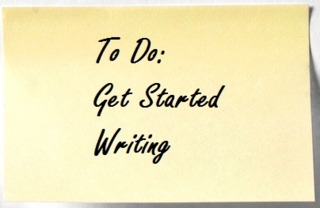 you have for a story is like a tiny seed. Not all seeds grow into beautiful plants, and likewise not all story ideas will yield an impressive tale. Still, most seeds are capable of growing, so long as they are properly nurtured.
you have for a story is like a tiny seed. Not all seeds grow into beautiful plants, and likewise not all story ideas will yield an impressive tale. Still, most seeds are capable of growing, so long as they are properly nurtured.
You plant the seed for your story the moment you commit it to paper or to your computer’s memory. But just as you wouldn’t sprinkle seeds in the ground and expect the best, so you shouldn’t believe that simply writing the story idea will lead to the next line and then the next paragraph, the next scene, and then the full tale.
Seeds need good soil to sprout. The rich dirt that helps your story spring forward are further thoughts in your head about where the tale might go – its characters, their motivations, their conflicts, the plot that plays out these conflicts, the setting upon which this all occurs. The more nutrients in the soil of your thoughts, the greater the likelihood that a story will rise from that initial seed.
Sunlight and water are necessary to keep a plant growing. You can give your story sunlight by opening your notebook or laptop and setting aside the necessary time to work on it. You water your story when you devise dialogue exchanges while standing in line at the supermarket or play out how the plot might turn as you drive your car to work and then apply those thoughts when you next work on the manuscript.
Unfortunately, sunlight and water encourages weeds to grow about your story. These ugly interlopers threaten to choke off your story, depriving it of much-needed nutrition, sunlight and water. Identify and cut those weeds – the life-sucking adverbs, the shaded descriptions that don’t move the story forward, the crowding passive voice sentences – from your tale.
Few gardens planted by novices look perfect. But with each successive year, the gardener’s knowledge and skills expand, and their flowers, vegetables, shrubs, herbs or trees grow to be like those in the perfect pictures that appear in books or online. Likewise, so long as you nurture and tend to your story, it and the future seeds you plant naturally will bloom into a beautiful creation.
Need an editor? Having your book, business document or academic paper proofread or edited before submitting it can prove invaluable. In an economic climate where you face heavy competition, your writing needs a second eye to give you the edge. Whether you come from a big city like Oklahoma City, or a small town like Peculiar, Missouri, I can provide that second eye.
<A HREF="http://ws-na.amazon-adsystem.com/widg... Widgets</A>Related articles
 Don't rely on inspiration to carry your story
Don't rely on inspiration to carry your story Avoid exposition (Show, don't tell!)
Avoid exposition (Show, don't tell!)
October 24, 2014
Promote your book by hosting guest bloggers
A great  way to promote your book by reducing your workload is letting others guest blog on your site.
way to promote your book by reducing your workload is letting others guest blog on your site.
Hosting a guest blogger offers a couple of benefits to your site. Most obviously, it frees you from having to come up with another blog entry. More importantly, though, it exposes others to your blog and website, as the guest blogger promotes his appearance on your pages. This brings new visitors to your site, and many of them probably have never heard of you or your book.
To find guest bloggers, simply invite others to take on that role. Offers can be made via your social media posts or by emailing someone who you think would write something of interest to your readers.
You may receive guest blogging requests from people you don’t know. Before letting just anyone guest blog at your site, though, you’ll want to know their credentials. They should be qualified to write for your site and should be of interest to your readers. Perhaps their credentials are being a fellow author, a publisher, a literary agent, or a book editor. Or possibly they are an expert in the area you write about, say a car designer if you wrote a book about car maintenance.
In addition, before giving them the go ahead to write their guest blog, have them pitch some topics. You might then say “no” to some, as you’ve already written about them or as they wouldn’t be of interest to your readers. Other topics you might tweak so they better fit your readers. Knowing in advance what one guest blogger will write about also means you can say “no” to that topic if a second or third guest blogger proposes it.
One guest blog submission to always say “no” to is one that has appeared elsewhere. Guest bloggers should create unique material for your site or interest in the post will be reduced. Type various phrases from the submission into a search engine to see if it has already ran or has simply been rewritten for your site.
Always let your guest blogger know that you reserve the right to edit their submission. You should edit it as well, at least to catch typos. Such editing includes the option to reduce the piece’s length (If your blog runs about 800 words, you don’t want a 3000-word entry posted.) and writing the headlines/subheads as you see best.
Also limit the number of submissions by any one guest blogger, usually to once a month at most. Some writers are prolific and can churn out a lot of material that soon crowds out your own entries. If looking to reduce your workload, opting for a variety of guest bloggers typically is better than relying on one or two writers.
Be sure to promote your guest blogger and his topic on your various social media. This can attract attention and visits from those readers who would be particularly interested in the post. It’s also another way for those interested in the guest blogger to stumble across your site as they conduct Internet searches about him.
Need an editor? Having your book, business document or academic paper proofread or edited before submitting it can prove invaluable. In an economic climate where you face heavy competition, your writing needs a second eye to give you the edge. Whether you come from a big city like San Diego, California, or a small town like Eek, Arkansas, I can provide that second eye.
Amazon.com Widgets
October 23, 2014
Pay attention to your author’s bio pic
One of 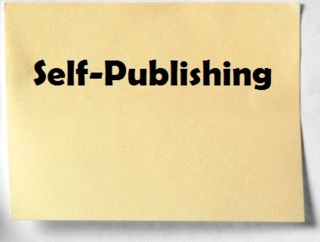 the elements of a self-published book that shouldn’t be overlooked is the author’s photograph. While the photo often is a thumbnail or even smaller, it can subtly affect a reader’s decision to purchase your book. A blurry or a pixelated photo suggests (rightly or wrongly) that the rest of the book is unprofessional; a photo that makes you look mean or physically unappealing tells the reader that you’re creepy and so probably is your book. Further, the author’s bio pic can appear in a number of spots – the back cover, next to the author’s bio at the book’s end, on your website, on web pages selling or promoting your book (such as Amazon.com and Goodreads) and probably elsewhere.
the elements of a self-published book that shouldn’t be overlooked is the author’s photograph. While the photo often is a thumbnail or even smaller, it can subtly affect a reader’s decision to purchase your book. A blurry or a pixelated photo suggests (rightly or wrongly) that the rest of the book is unprofessional; a photo that makes you look mean or physically unappealing tells the reader that you’re creepy and so probably is your book. Further, the author’s bio pic can appear in a number of spots – the back cover, next to the author’s bio at the book’s end, on your website, on web pages selling or promoting your book (such as Amazon.com and Goodreads) and probably elsewhere.
Given this, you want to treat your author’s bio picture with some forethought and care. After all, this is a photo of yourself – if you’re unconcerned with what it looks like, then readers might wonder just how concerned you are with the book’s content.
Some general guidelines for the author’s bio picture include:
g Ensure it is technically of high quality – As with your book cover, make sure the picture is not pixelated or blurry. Ensure its size is large enough to be used for more than just a thumbnail (which includes making it 300 dpi). In short follow all of the rules of good photography.
g Crop appropriately – Usually a head and shoulders shot is enough. The head should fill most of the photo. You can cut a little off the crown of the head if you need to crop it to fit a photo box.
g Focus on personality – Always ask what type of readers will purchase your book and try to be like them. If you’ve written a book about horses, wear a Western shirt rather than a suit and tie; if you’ve written a novel about hikers surviving a surprise mountain blizzard, wear a sunhat like hikers would don.
g Think eyes – They truly are the proverbial “window to the soul.” They should be focused on the camera and full of energy, not appearing dead, glazed over, or bloodshot.
g Smile – You want to appear friendly and inviting. Of course, there are a wide range of smiles, from the subtle Mono Lisa to the toothpaste-selling wide, white teethy smile. Select one that’s appropriate for your book’s topic.
g Pose “naturally” – Look over other author’s pics and see how they stand. Usually the photo is not a straight-on shot, like what police would take at a line-up. The head might be canted slightly to the side, a shoulder turned toward the camera, the chin resting on a hand and so on. Appear as if the camera caught you in your natural state.
g Look clean – Your hair should be combed (Of course, hair can be styled to be mussed up.), your face washed and with the appropriate amount of makeup, and your clothes clean (even if you wrote a book about being a garbage man).
Need an editor? Having your book, business document or academic paper proofread or edited before submitting it can prove invaluable. In an economic climate where you face heavy competition, your writing needs a second eye to give you the edge. Whether you come from a big city like Rochester, New York, or a small town like Beech Bottom, West Virginia, I can provide that second eye.
Amazon.com Widgets
October 22, 2014
Editing client publishes second in crime series
A long-time 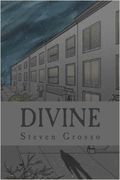 editing client of mine, Steven Gross, has pubished his latest novel, the next installment in the Benny Steel detective series. “Divine” tells the story of Philadelphia homicide detective Benny Steel, who steps into a case from hell—a mind-boggling, terrifying, calculated string of events—and goes on a hunt for a man with an agenda, but whose motive is unclear to law enforcement. Steel is left staring into the face of evil, an evil that cuts through his soul and tests his faith in the goodness of humanity. But time is running out and this case is ready to explode. Can he stop this man before it’s too late? The book is available for purchase online.
editing client of mine, Steven Gross, has pubished his latest novel, the next installment in the Benny Steel detective series. “Divine” tells the story of Philadelphia homicide detective Benny Steel, who steps into a case from hell—a mind-boggling, terrifying, calculated string of events—and goes on a hunt for a man with an agenda, but whose motive is unclear to law enforcement. Steel is left staring into the face of evil, an evil that cuts through his soul and tests his faith in the goodness of humanity. But time is running out and this case is ready to explode. Can he stop this man before it’s too late? The book is available for purchase online.
Need an editor? Having your book, business document or academic paper proofread or edited before submitting it can prove invaluable. In an economic climate where you face heavy competition, your writing needs a second eye to give you the edge. Whether you come from a big city like Portland, Maine, or a small town like Papa, Hawaii, I can provide that second eye.
Amazon.com WidgetsRelated articles
 Editing client publishes sequel to popular novel
Editing client publishes sequel to popular novel
October 21, 2014
Use third–person limited for greater clarity
Another type 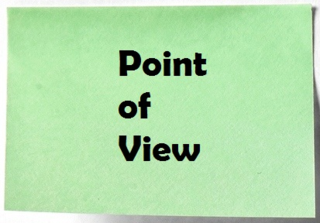 of third-person point of view is third-person limited. This is when the narrator tells the story only from the perspective of what the main character can observe and think, but unlike first-person limited, we also observe the main character through the author’s eyes.
of third-person point of view is third-person limited. This is when the narrator tells the story only from the perspective of what the main character can observe and think, but unlike first-person limited, we also observe the main character through the author’s eyes.
Here’s an example of third-person limited:
Nevar nervously separated the tools she needed for the flight, and Evod, finally quiet, helped. She admired her family’s craft, a sleek saucer powered by duo artificial singularities that warped and folded space so they could outrun even light. The others around them had begun performing the same preflight checks that she and Evod had done hours before, and soon all the port seemed a blur of activity, like a rain flurry with drops flashing in every direction.
She tried observing the others in action, watching their repetitive and certain motions, but Evod herded her into the spacecraft. “Focus, focus!” he snapped, and she knew he was right, that she must stop behaving like a child at a sucrose stand.
Notice how we see events unfolding through the eyes of Nevar, the main character: Evod’s noisiness, the port activity, Evod’s admonition. We do not see the world through the perspective of her competitors or of Evod. Further, the word “I” never would appear in the piece unless spoken by someone; that’s because Nevar isn’t telling the story – the author is. The author even offers a small comment, describing Nevar’s movement as “nervous” (Nevar might not describe them as such!).
Third-person limited offers several advantages:
g Gives the writer more flexibility than first-person point of view – If the story above were told only from Nevar’s point of view, the author could not offer his perspective on her. The audience no longer would be looking upon the stage that the main character acted but would be standing upon it in the main character’s body.
g Provides a less biased perspective – Stories told in first-person also carry the weight of the main character’s subjective views and perspectives. Sometimes this can make the protagonist less acceptable or likeable to a reader, who is more enlightened than that character. Third-person limited moves the reader to the usually more enlightened perspective of the author.
g Offers a clear sense of who the reader should identify with and invest in – Stories told only from the main character’s perspective sometimes don’t make that persona the hero but someone whose weaknesses cost him. The author’s insertions show readers how they should view the character. Because of that, readers often like this point of view.
One danger of third-person limited, however, is that the reader loses a sense of intimacy with the main character. Rather than fully experience the universe with the main character, the reader can feel too superior to him. If your goal is to have the reader relate to the main character, then this may not be the best choice for your story’s point of view.
Need an editor? Having your book, business document or academic paper proofread or edited before submitting it can prove invaluable. In an economic climate where you face heavy competition, your writing needs a second eye to give you the edge. Whether you come from a big city like Sacramento, California, or a small town like Intercourse, Pennsylvania, I can provide that second eye.
<A HREF="http://ws-na.amazon-adsystem.com/widg... Widgets</A>Related articles
 How to come up with an awesome story title
How to come up with an awesome story title Constructing your story's main character
Constructing your story's main character Create main character that readers bond with
Create main character that readers bond with Incorporate imagery into your story
Incorporate imagery into your story Select a viewpoint that gives you flexibility
Select a viewpoint that gives you flexibility
October 20, 2014
Prologue, epilogue offer info, action to boost tale
Sometimes a 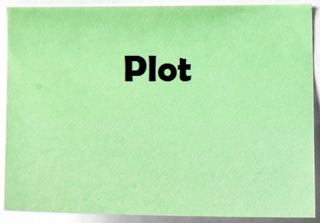 novel begs for a different opening than what appears in Chapter 1, though the story really begins with those opening first lines. Or the novel might need a different closing despite the story’s central problem has been resolved. In such scenarios, you may want to consider adding a prologue (in the case of the former) or an epilogue (in the case of the latter) to your book.
novel begs for a different opening than what appears in Chapter 1, though the story really begins with those opening first lines. Or the novel might need a different closing despite the story’s central problem has been resolved. In such scenarios, you may want to consider adding a prologue (in the case of the former) or an epilogue (in the case of the latter) to your book.
Traditionally a prologue establishes the story’s setting and provides a number of background details that will help the reader better understand what’s happening in Chapter 1. Often this is a big info dump, such as the description of the desert world Arrakis and the interstellar political situation in the science fiction novel “Dune.” Other times, it’s a brief story that occurred years or months before the main story. Such a story provides an incident that will later help explain how the characters motivations came to be.
This is not to say a prologue can’t be set after the novel’s main action, however; in such cases, the novel then is about how the main characters got to the events that occurred in the prologue. That means the prologue should be fairly spectacular and interesting to the reader or it’ll fail.
Another option is to use the prologue to position the reader’s attitude toward the story; for example, “The Princess Bride” opens with a grandfather reading a bedtime story to his grandson with the read story being the main storyline; we then know through this opening that the story is mainly a humorous fairy tale. In that instance, though, the prologue is less a prologue than simply the frame story.
An epilogue is more like an afterword. Sometimes it serves the purpose of bringing closure to the story by telling what is happening weeks or months later, and more properly is the story’s denouement. Other times, it sets up the characters for the author’s sequel by placing them in a situation (It may even be a scene or chapter from that next book.).
Need an editor? Having your book, business document or academic paper proofread or edited before submitting it can prove invaluable. In an economic climate where you face heavy competition, your writing needs a second eye to give you the edge. Whether you come from a big city like Miami, Florida, or a small town like Normal, Illinois, I can provide that second eye.
<A HREF="http://ws-na.amazon-adsystem.com/widg... Widgets</A>
October 19, 2014
Five Great Quotations about Word Choice
“The difference  between the right word and the almost right word is the difference between lightning and a lightning bug.” – Mark Twain
between the right word and the almost right word is the difference between lightning and a lightning bug.” – Mark Twain
“One day I will find the right words, and they will be simple.” – Jack Kerouac
“All the words I use in my stories can be found in the dictionary - it’s just a matter of arranging them into the right sentences.” – Somerset Maugham
“An excellent precept for writers: have a clear idea of all the phrases and expressions you need, and you will find them.” – Ximenes Doudan
“The misuse of language induces evil in the soul.” – Socrates
Need an editor? Having your book, business document or academic paper proofread or edited before submitting it can prove invaluable. In an economic climate where you face heavy competition, your writing needs a second eye to give you the edge. Whether you come from a big city like New York, New York, or a small town like Bantam, Connecticut, I can provide that second eye.
<A HREF="http://ws-na.amazon-adsystem.com/widg... Widgets</A>Related articles
 Five great quotations about writing
Five great quotations about writing Five Great Quotations about Readers
Five Great Quotations about Readers Five Great Quotations about Why We Must Write
Five Great Quotations about Why We Must Write Five great quotations about fiction
Five great quotations about fiction Five great quotations about novel writing
Five great quotations about novel writing
October 18, 2014
Writing Inspiration: My ideas are a shapeless mass that my writing molds into beauty
The ancient  Greeks believed the objects we created represented an idealized form of that thing. A sculptor chipped away at a block of marble to find the perfect representation of a body; the painter filling the blank canvas sought to create the perfect representation of a landscape.
Greeks believed the objects we created represented an idealized form of that thing. A sculptor chipped away at a block of marble to find the perfect representation of a body; the painter filling the blank canvas sought to create the perfect representation of a landscape.
When writing, you are like a potter who takes a shapeless mass of clay and seeks to mold it into a beautiful vase. The potter visualizes the size, form, shape and decorations upon the vase. In the same way, a writer envisions the length, genre, plot and style of his story.
Rather than clay, words are the writer’s natural material. And just as clay from one quarry might be different in its texture and color from clay found at another site, so each word you use is different in its meaning and sound.
True craftsmanship for the potter comes in being aware of what can be done with the clay and then having the knowledge and skills to shape it upon a wheel and properly fire it in a kiln. A writer also must be aware of what can be done with the words before him, of how to string them into sentences that best evoke the feeling and captures the message of the story.
Where the potter must pinch the spinning clay or coil it into a structure, the writer must compress passages to get the most out of his characters and descriptions or wind the plot so it takes the reader on an intriguing journey worth reading.
And just as a potter might find his fingers have left an imperfection and so remolds the wet clay upon the wheel or just as a sculptor might chip away a bit too much in one area and so revisits that portion of the statue to cover the flaw, so a writer must revise and rewrite paragraphs, passages, and scenes to ensure the story best reflects an idealized form of the tale that is being told.
If like the potter and the sculptor you keep at it, eventually you will rub out all of the blemishes in your story – and create a thing of beauty that brings joy and meaning to others, just as certainly as any vase or statue does.
Need an editor? Having your book, business document or academic paper proofread or edited before submitting it can prove invaluable. In an economic climate where you face heavy competition, your writing needs a second eye to give you the edge. Whether you come from an urban area like California's Orange County or a rural area like Loving County, Texas, I can provide that second eye.
<A HREF="http://ws-na.amazon-adsystem.com/widg... Widgets</A>Related articles
 Don't rely on inspiration to carry your story
Don't rely on inspiration to carry your story What if I edit out too much exposition?
What if I edit out too much exposition?
October 17, 2014
Sell your book by asking people about themselves
All too  often authors approach marketing their book by talking about it. That seems to make sense; after all, your objective in marketing is to show potential buyers that your book is of value to them, and that means you have to tell them what’s in it, right?
often authors approach marketing their book by talking about it. That seems to make sense; after all, your objective in marketing is to show potential buyers that your book is of value to them, and that means you have to tell them what’s in it, right?
You may want to take a counterintuitive approach, however: Have potential readers talk about themselves.
When using social media to promote your book, ask your followers/friends a question that will elicit a response. This question should relate to your book, though you won’t tell readers that.
For example, on the Twitter page for my hiking guidebooks, I recently asked these questions:
g What’s your favorite national park trail?
g What is the most annoying thing you’ve seen another hiker do on a trail?
g What item not essential to survival is always in your backpack?
Not to sound cynical, but the reality is that most people like to talk about themselves or share their opinion. So a question draws people to my tweet rather than encourages them to pass on it when they sniff out a sales pitch.
Should they reply to the question, their answer will go to all of their followers – which means so does your tweet. That’s as good as a retweet.
Should you continue to ask questions over the long-term, eventually those who enjoy participating with replies will follow you (if they don’t already), will check out your profile, or will click the link in your tweet.
The question and that link should relate to the book you’re selling. So the link for the first question I tweeted above could take them to a blog entry related to national parks – a blog entry, by the way, that includes information about my hiking guidebook to national parks – or it might take them to a page on my website where that hiking guidebook can be purchased.
Need an editor? Having your book, business document or academic paper proofread or edited before submitting it can prove invaluable. In an economic climate where you face heavy competition, your writing needs a second eye to give you the edge. Whether you come from a big city like Detroit, Michigan, or a small town like Carefree, Arizona, I can provide that second eye.
Amazon.com Widgets
October 16, 2014
Forewords, prefaces and introductions
Before your 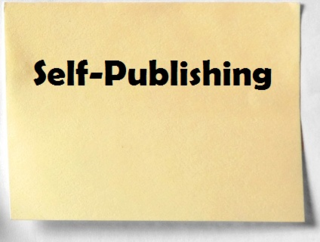 actual book begins – particularly if writing nonfiction – you may want to include material that that introduces readers to it. The idea of these introductions is in large part to establish why readers actually should read the book.
actual book begins – particularly if writing nonfiction – you may want to include material that that introduces readers to it. The idea of these introductions is in large part to establish why readers actually should read the book.
There are three general types of introductions that you might include in your book:
g Foreword – This is an essay about the book written by someone other than the book’s author. Ideally, a recognizable name in the book’s genre or subject matter writes the foreword. As the author, you might consider seeking out well-known names to write the foreword. It is always signed, meaning the essay’s author gives his name and usually the date and place of writing.
g Preface – This is written by the book’s author. Typically, it tells how the author came up with the idea for the book, explains the importance of the subject matter (or the book’s approach to it), and may include a list of thanks and acknowledgements at its end. It’s usually signed with the date and place of writing given. The preface always comes after the foreword.
g Classic introduction – Traditionally, an introduction gives information that the reader ought to know to better understand the book, such as how it’s organized, how it’s laid out, special features, and so on. In that sense, it’s a like set of explanatory notes.
Some authors combine the preface and introduction into one and label it as an introduction. I did that in my book “Hikes with Tykes” because explaining how the book came to be was essential to understanding how the volume was organized. Some authors also opt for an acknowledgements page rather than listing the names at the end of a preface or an introduction; other authors use both methods in the same book, saving the acknowledgements page for the most special contributions.
Page numbers for the foreword and preface typically are done in Roman numerals (i, ii, iii) while the introduction is in Arabic numbers (1, 2, 3).
Authors also should know that very few readers actually will sift through any of this introductory material. After all, most readers don’t need to be convinced to read the book as anyone considering such a purchase probably will rely on the back cover blurb, reviews by other readers, or maybe a quick paging through to see what the various chapters cover. Still, indulge that small fraction of readers who do look at forewords, prefaces and introductions, as they will appreciate gaining insights into your book from this material.
Need an editor? Having your book, business document or academic paper proofread or edited before submitting it can prove invaluable. In an economic climate where you face heavy competition, your writing needs a second eye to give you the edge. Whether you come from a big city like Fort Worth, Texas, or a small town like Tightwad, Missouri, I can provide that second eye.
Related articles
 Decide what your book's website will look like
Decide what your book's website will look like Pages needed for website promoting your book
Pages needed for website promoting your book Use appendix to add extra info to your book
Use appendix to add extra info to your book How to create your book's table of contents
How to create your book's table of contents



